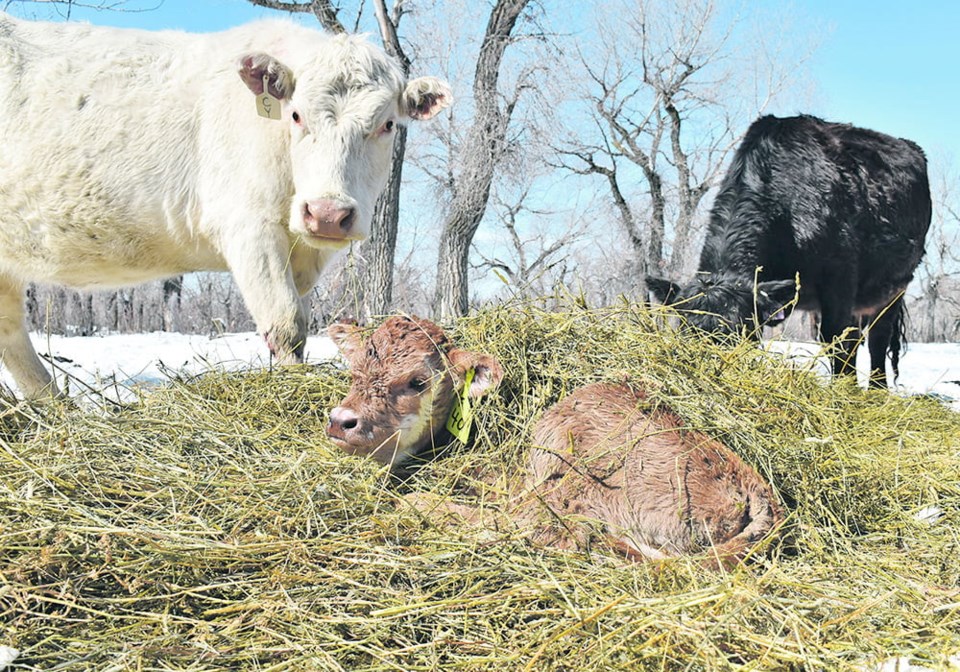WESTERM PRODUCER — Calf health is a major focus for beef cow-calf producers and their veterinarians for good reason.
A recent paper in the journal, Translational Animal Science, highlights some of the findings from the western Canadian cow-calf surveillance network focusing on calf health issues. Dr. Cheryl Waldner and colleagues from the Western College of Veterinary Medicine, the University of Calgary School of Veterinary Medicine and Big Sky Health Analytics in Vermilion, Alta., were the authors of the paper. The study used data from 89 western Canadian cow-calf herds to estimate the frequency of disease treatment in pre-weaned calves.
As we’ve seen in other studies, bovine respiratory disease (BRD) in calves has become the predominant reason for young calves to receive antibiotic treatments. Slightly more than half of the herds reported that they had treated at least one calf for BRD prior to two months of age.
On average, across all farms, approximately five percent of calves were treated for BRD before weaning, with most of those treatments occurring before two months of age.
It is interesting to note that this average percentage is probably skewed upward by some herds that have significant outbreaks of respiratory disease in this age group. Five percent of the herds treated at least 25 percent of their calves for respiratory disease prior to weaning. In comparison, an overall average of three percent of calves were treated for diarrhea and two percent of calves were treated for navel infections with most of those treatments occurring in the first month of life.
Death losses attributed to diarrhea and BRD in calves were almost identical, with about 0.5 percent of calves on average dying from each of these diseases.
The authors also examined some of the management risk factors that might explain the differences in disease risk between these herds. For this article, I want to focus primarily on the management factors associated with BRD disease risk in calves. We need to be cautious in interpreting results from any cross-sectional study because these associations are not necessarily true causes of disease. However, they do demonstrate some important associations that may need to be evaluated in future studies.
In many studies we have identified that herds that have a higher risk of BRD in their calves tend to be more likely to use BRD vaccines in their calves. This is probably a classic example of a chicken and egg problem. It doesn’t mean that the vaccines don’t work or that the vaccines cause BRD. It suggests that those producers that have had BRD problems in their herd are more likely to vaccinate their calves. In fact, this was the case again in this study.
The vaccination of breeding cows with bacterial BRD vaccines was associated with a substantial decrease in risk of BRD in older calves in this study. This has been identified in other studies as well and might be something to discuss with your veterinarian if you are not currently using these vaccines in your adult cow herd.
Several of the risk factors that were associated with a higher risk of BRD in calves were management issues that were associated with the density of the cow herd around calving time. Herds that calved earlier in the year were more likely to have higher rates of BRD treatments in their calves. Presumably those herds that calve earlier are more likely to use calving barns or other calving management systems that have a higher density of cows and calves together, which allows the spread of some of the bacteria and viruses that cause BRD.
Other associated risk factors such as winter feeding and calving in the same area, calving heifers and cows together and calving heifers in high density facilities were also associated with an increased risk of BRD in calves. The lack of separate winter-feeding areas from the calving area was a highly significant risk factor in this study and I found it interesting that this risk factor has usually been associated with calf diarrhea and not BRD in the past.
In addition, risk factors associated with gathering calves and cows together for various management events was associated with a higher BRD risk. This has been identified consistently in almost every study that has examined pre-weaning BRD in calves.
Procedures such as timed artificial insemination programs often cause producers to bring cows and calves into a corral several times and perhaps separate cow-calf pairs, which can provide another opportunity for increased animal density, and as a result, an increased risk of BRD pathogen transfer from animal to animal. It was also interesting that procedures such as the Sandhills calving system or moving cow-calf pairs to nursery pastures was associated with a lower risk of BRD, which demonstrates that the management factors that spread pairs out tend to have a beneficial effect.
Finally, herds that purchased cows, calves or cow-calf pairs during the calving periods were much more likely to have a higher risk of BRD in their calves. This has been identified in previous studies and seems to be a consistent finding.
It would appear that buying adult cattle or cow-calf pairs increases your risk for infectious disease outbreaks in your young calves and perhaps if animals need to be bought, they should be introduced to the herd at some other time of year to reduce the risk.
John Campbell is a professor in the department of Large Animal Clinical Sciences at the University of Saskatchewan’s Western College of Veterinary Medicine.




